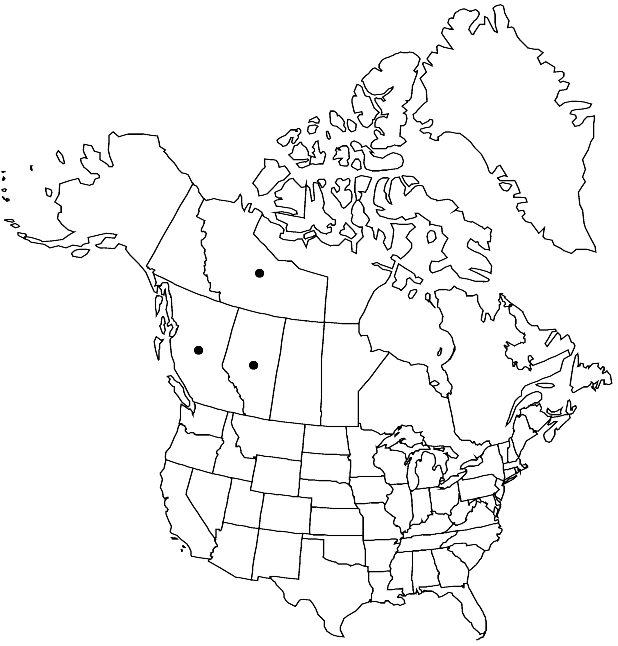Braya humilis subsp. porsildii
Novon 16: 348. 2006.
Stems ascending to erect or, rarely, decumbent, usually unbranched, 0.3–1.7 (–2.5) dm, densely pubescent. Leaves: blade margins usually entire, sometimes weakly sinuate-dentate, surfaces densely pubescent. Flowers: petals white, 4.4–6.9 × (1.9–) 2.3–4.2 mm. Fruits often abortive, somewhat torulose, 0.8–1.2 mm wide when fully developed; septum not fenestrate or split longitudinally. 2n = 28.
Phenology: Flowering May–Jul.
Habitat: Dry alpine scree slopes, glacial moraines, and gravel bars, often on limestone gravels and soils
Elevation: 500-3000 m
Distribution

Alta., B.C., N.W.T.
Discussion
Subspecies maccallae and porsildii share the large flowers, high percentage of abortive fruits, and leaf margins mostly entire, but they differ in indumentum and habitats.
Selected References
None.
Lower Taxa
"not" is not a number. "elongated" is not a number."thick" is not a number."dm" is not declared as a valid unit of measurement for this property."dm" is not declared as a valid unit of measurement for this property.